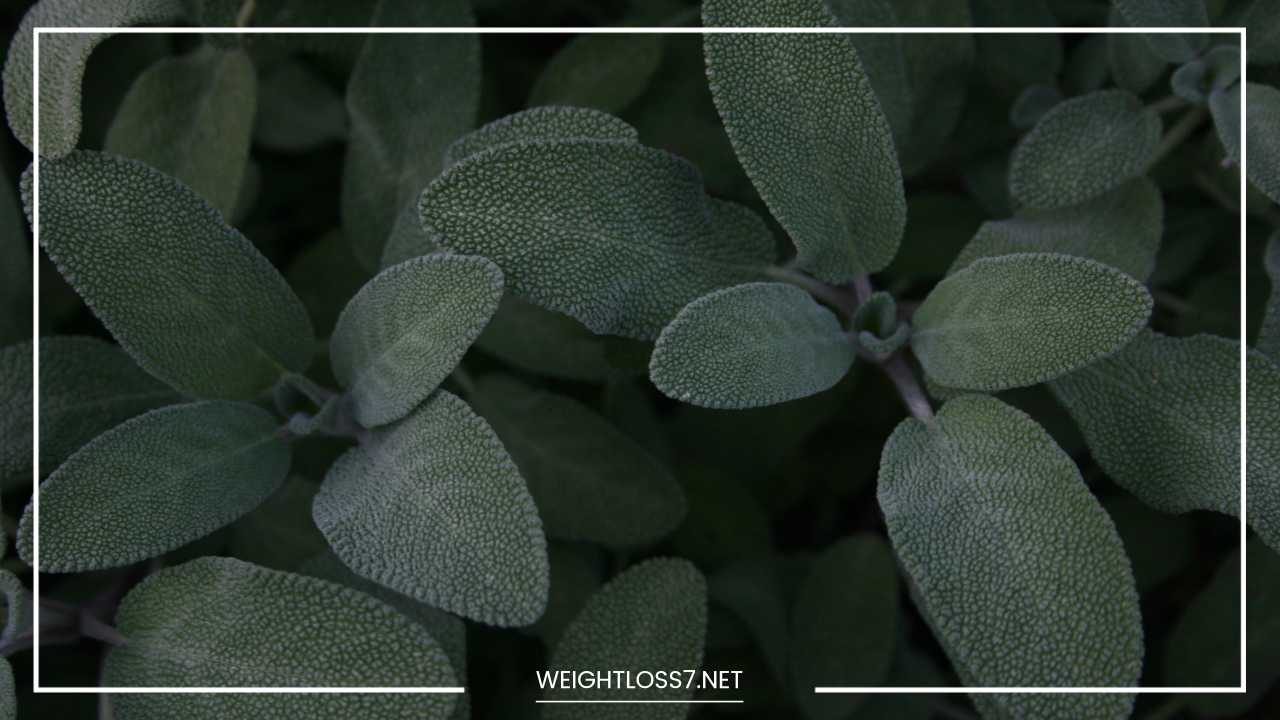Sage Uses and Health Benefits

Sage
Sage: A Comprehensive Guide to Its Versatility and Health Benefits
Sage (Salvia officinalis) is an herb with a storied history and a remarkable range of uses. Known for its fragrant leaves and earthy flavor, sage has earned its place in both culinary and medicinal traditions worldwide.
Derived from the Latin word “salvere,” meaning “to heal,” sage has been used for centuries to improve health and add flavor to food. This extensive guide delves into sage’s various applications, benefits, and ways to incorporate it into your life.
History and Origins of Sage
Sage has been utilized since ancient times, with its origins traced back to the Mediterranean region. Historical records indicate that the Greeks and Romans valued sage not only for its culinary properties but also for its medicinal uses. Dioscorides, a renowned Greek physician and pharmacologist, documented sage’s use in treating ailments such as sore throats and digestive issues.
During the Middle Ages, sage continued to be a staple in both cuisine and medicine. It was often used in tinctures and remedies to address a range of conditions, from digestive disturbances to respiratory infections. The herb’s enduring popularity is a testament to its versatility and effectiveness.
In modern times, sage remains a prominent herb in various cultures, valued for its ability to enhance dishes and support health. Its rich history underscores its importance and the broad range of benefits it can offer.
Culinary Uses of Sage
Sage is celebrated for its distinctive flavor, which can be described as earthy, slightly bitter, and aromatic. This complex flavor profile makes sage a valuable addition to many dishes. Here are some key ways sage is used in cooking:
1. Meat and Poultry
Sage’s robust flavor pairs exceptionally well with meats and poultry. It is particularly effective in seasoning:
- Turkey and Chicken: Sage is a classic companion to poultry, especially in dishes like roast turkey or chicken. It can be used in both stuffing and as a seasoning rub to enhance the natural flavors of the meat.
- Pork, Lamb, and Beef: Sage also complements richer meats such as pork, lamb, and beef. It adds depth to sausages and meatloaf, balancing the richness of these proteins.
2. Stuffings and Dressings
Sage is a traditional ingredient in stuffings and dressings, particularly those used in holiday meals:
- Bread Stuffing: Incorporating sage into bread stuffing adds an aromatic dimension that pairs beautifully with the savory notes of the bread and other herbs.
- Vegetable Stuffings: Sage can be used to flavor stuffings for vegetables such as bell peppers or squash, providing a sophisticated twist to these dishes.
3. Sausages
In many culinary traditions, sage is used to flavor sausages. Its strong flavor profile works well with the spices typically used in sausage making:
- Traditional Sausages: In British cuisine, sage is often included in traditional sausages like pork sausages. The herb’s flavor complements the meat and enhances the overall taste.
- Homemade Sausages: For homemade sausages, adding sage can create a unique and flavorful product that stands out from commercial varieties.
4. Cheeses
Sage can be incorporated into various cheeses to create a distinctive flavor:
- Goat Cheese: Sage-infused goat cheese has a creamy texture with a subtle, herby taste. It works well as a spread or in recipes like stuffed mushrooms.
- Ricotta: Mixing sage into ricotta cheese adds depth to this mild cheese, making it perfect for filling pasta dishes or as a component in savory tarts.
5. Beverages
Sage is also used to create unique beverages:
- Sage Tea: Brewed sage tea offers a slightly bitter, astringent flavor. It can be enjoyed on its own or flavored with honey and lemon for added sweetness.
- Cocktails: Sage can be used in cocktails to provide an herbal note. Sage leaves can be muddled into drinks like gin and tonics or used to infuse spirits.
Medicinal Benefits of Sage
Sage is not only a culinary delight but also has a range of potential health benefits. While scientific research is ongoing, many studies have highlighted the following areas where sage may offer advantages:
1. Cognitive Function
Sage has been linked to improvements in cognitive function, which can be particularly beneficial for older adults:
- Memory and Concentration: Research has indicated that sage may help enhance memory and concentration. Studies suggest that compounds in sage may support brain health and cognitive performance, especially in aging populations.
- Alzheimer’s Disease: Preliminary research has explored sage’s potential benefits for Alzheimer’s disease. Some studies suggest that sage extracts might help improve cognitive function in individuals with this condition. However, more research is needed to fully understand its effects.
2. Mood and Anxiety
Sage may play a role in improving mood and reducing anxiety:
- Stress Reduction: Sage has been found to have calming properties that may help alleviate stress and anxiety. Research indicates that it may influence neurotransmitter levels and support emotional well-being.
- Depression: While more evidence is needed, some studies suggest that sage may have a positive effect on mood and could be beneficial for individuals experiencing mild to moderate depression.
3. Oral Health
Sage’s antibacterial and anti-inflammatory properties contribute to oral health:
- Antibacterial Properties: Sage has been shown to have antibacterial effects, which can be useful in promoting oral health. It is often used as a natural mouthwash or in lozenges to soothe sore throats.
- Gum Disease: Sage may help reduce inflammation and support gum health. Some studies suggest it could be beneficial for managing conditions like gingivitis and periodontitis.
4. Digestive Health
Sage has a long history of use in supporting digestive health:
- Digestive Support: Traditionally, sage has been used to alleviate digestive issues such as indigestion, bloating, and gas. Its carminative properties help soothe the digestive tract and reduce discomfort.
5. Menopausal Symptoms
Sage may provide relief from certain menopausal symptoms:
- Hot Flashes and Night Sweats: Sage has been used to help manage hot flashes and night sweats, common symptoms of menopause. Some studies suggest that it may help reduce the frequency and severity of these symptoms.
6. Skin Health
Sage’s anti-inflammatory properties also extend to skin health:
- Anti-inflammatory Properties: Sage can be used topically to soothe irritated skin and manage conditions such as acne and eczema. Its anti-inflammatory effects help reduce redness and swelling.
How to Use Sage
Sage can be utilized in various forms, each offering different benefits and uses:
1. Fresh Leaves
Fresh sage leaves can be used in cooking, as a garnish, or brewed into tea. To maximize flavor, add fresh sage towards the end of cooking or use it in dishes where its aroma can be appreciated.
2. Dried Leaves
Dried sage is a versatile pantry staple. It can be used to season a variety of dishes or incorporated into spice blends. Dried sage is more concentrated than fresh, so use it sparingly.
3. Sage Oil
Sage oil, which can be used topically or in aromatherapy, is known for its potential benefits for skin health and relaxation:
- Topical Use: Apply sage oil to the skin to help manage conditions like acne or eczema. Always dilute the oil with a carrier oil to avoid irritation.
- Aromatherapy: Add sage oil to a diffuser to enjoy its calming effects and enhance your environment with its soothing aroma.
4. Sage Supplements
Sage supplements are available in various forms, including capsules, tablets, and liquid extracts. These supplements provide a concentrated dose of sage’s beneficial compounds and can be used to support cognitive function, mood, and overall health.
Note: Always consult a healthcare professional before starting any new supplement, especially if you have existing health conditions or are taking other medications.
Sage Recipes
Incorporate sage into your cooking with these delicious and easy-to-make recipes:
1. Sage-Roasted Chicken
Ingredients:
- 1 whole chicken
- 2 tablespoons fresh sage leaves, chopped
- 1 lemon, quartered
- 4 cloves garlic, smashed
- Salt and pepper to taste
- 2 tablespoons olive oil
Instructions:
- Preheat the oven to 375°F (190°C).
- Rub the chicken with olive oil, salt, and pepper.
- Stuff the cavity with lemon quarters, garlic, and fresh sage.
- Place the chicken in a roasting pan and roast for 1.5 to 2 hours, or until the internal temperature reaches 165°F (74°C).
- Let the chicken rest for 10 minutes before carving.
2. Sage-Butter Salmon
Ingredients:
- 4 salmon fillets
- 2 tablespoons butter
- 2 tablespoons fresh sage leaves, finely chopped
- Salt and pepper to taste
- 1 lemon, sliced
Instructions:
- Heat butter in a skillet over medium heat until melted.
- Add chopped sage to the butter and cook for 1-2 minutes.
- Season salmon fillets with salt and pepper.
- Cook salmon in the skillet, skin-side down, for 4-5 minutes per side, or until cooked through.
- Serve with lemon slices and a drizzle of sage butter.
3. Sage-Infused Honey
Ingredients:
- 1 cup honey
- 1/4 cup fresh sage leaves
Instructions:
- Warm honey in a saucepan over low heat.
- Add sage leaves and allow to infuse for 5-10 minutes.
- Strain the sage leaves from the honey and store in a clean jar.
4. Sage Tea
Ingredients:
- 1 cup water
- 2-3 fresh sage leaves (or 1 teaspoon dried sage)
- Honey or lemon to taste (optional)
Instructions:
- Boil water and pour over sage leaves in a cup.
- Steep for 5-7 minutes.
- Strain the leaves and add honey or lemon if desired.
Final Thoughts
Sage is a versatile and valuable herb with a rich history and a broad range of uses. From its aromatic presence in culinary dishes to its potential health benefits, sage continues to be a cherished herb in kitchens and medicine cabinets alike.
Whether you use it to enhance the flavor of your meals, support your health, or soothe your skin, sage offers numerous benefits that make it a worthwhile addition to your diet and lifestyle.
By understanding the many applications and benefits of sage, you can fully appreciate this remarkable herb and incorporate it into your life in a variety of ways.
Whether through cooking, medicinal use, or topical application, sage provides a wealth of advantages that can enhance your overall well-being and enrich your daily experiences.

















